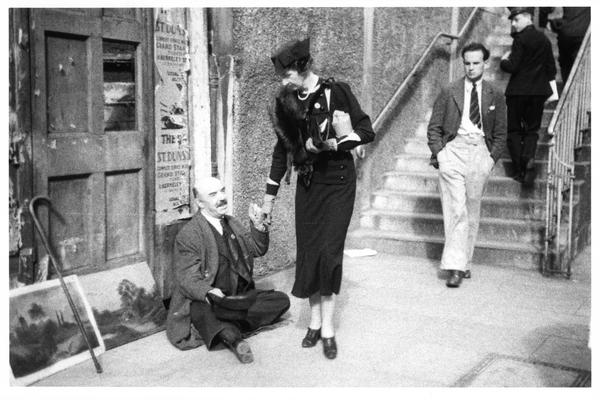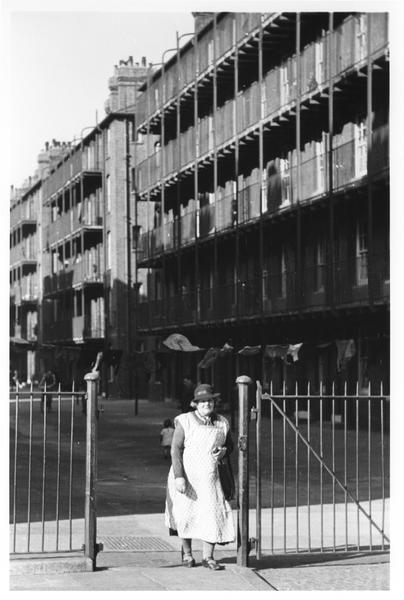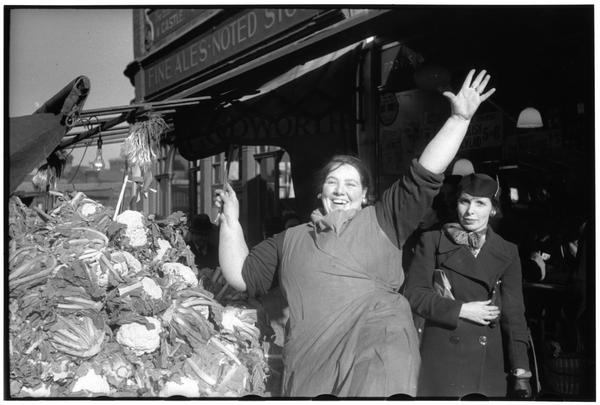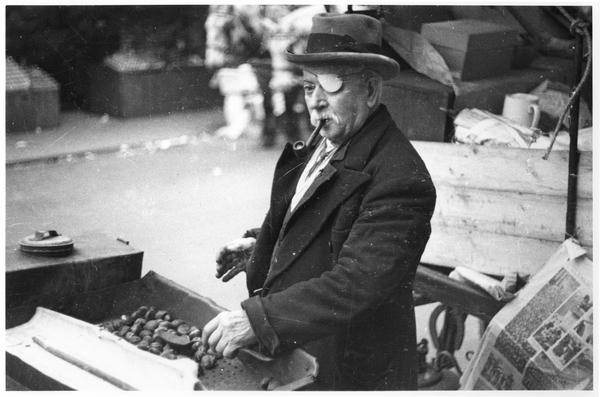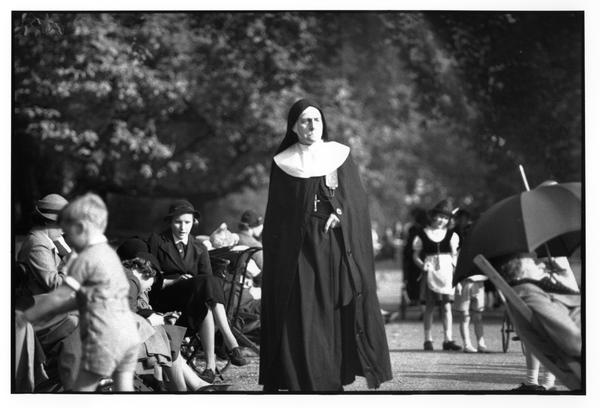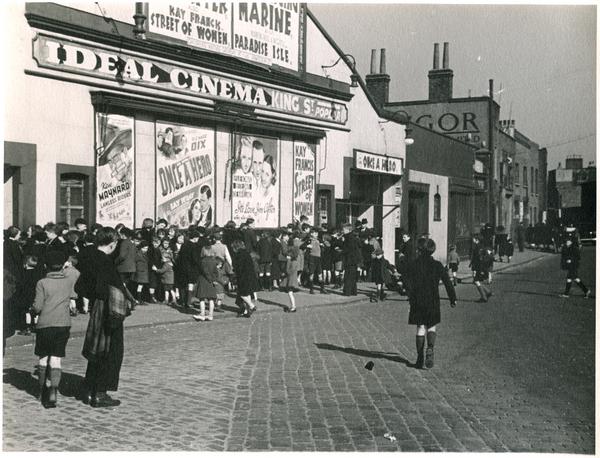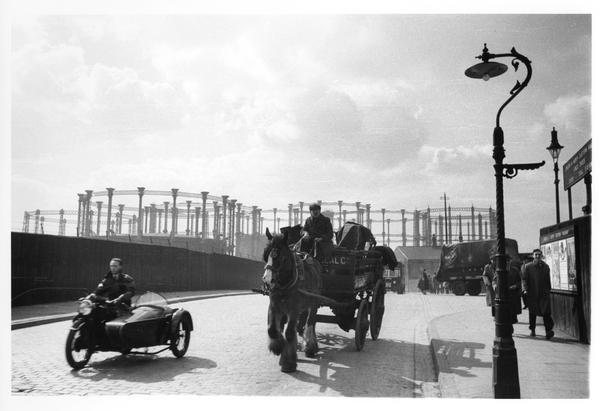The candid street photography of Margaret Monck
Camera in hand, Margaret Monck made regular trips to the East End in the 1930s. Her lively photos are filled with people at work and play.
East End
1911–1991

A cauliflower seller at Brixton Market, around 1935.
Snapshots of London lives
Monck’s photos were mainly taken in Limehouse, Shadwell and the Docklands. She also visited Portland Town near Camden and “Little Italy” in Saffron Hill, Clerkenwell.
Her street photography focused the lens on the energy and vitality of the places she encountered – she wanted to capture the “unexpected moment”. But she also observed the community that tied east London together, and saw the impact of the 1930s Great Depression.
The photos in our collection show smiling market traders, excited children and images of change in the capital: construction, demolition and horse-drawn carts overtaken by motorbikes.
“one always hopes that showing what is actually there will have an effect”
Margaret Monck
Framing Margaret Monck
Margaret Monck was born in 1911. She spent her childhood in India, at a time when it was part of the British empire. Her father, Frederic Thesiger, was the viceroy: the governor-general of the country, and the representative of the British monarch.
Monck’s first camera was a Box Brownie, which she got when she was eight years old. She recalls having “thoroughly enjoyed” using it to photograph her friends.
After moving to London, Monck studied drawing at Heatherley’s School of Fine Art, Chelsea.
Monck later became an assistant at the Lefevre Gallery of impressionist and modern art, which was started in 1926 on King Street, in St James’, London.
Monck also modelled for fashion photographer Norman Parkinson.
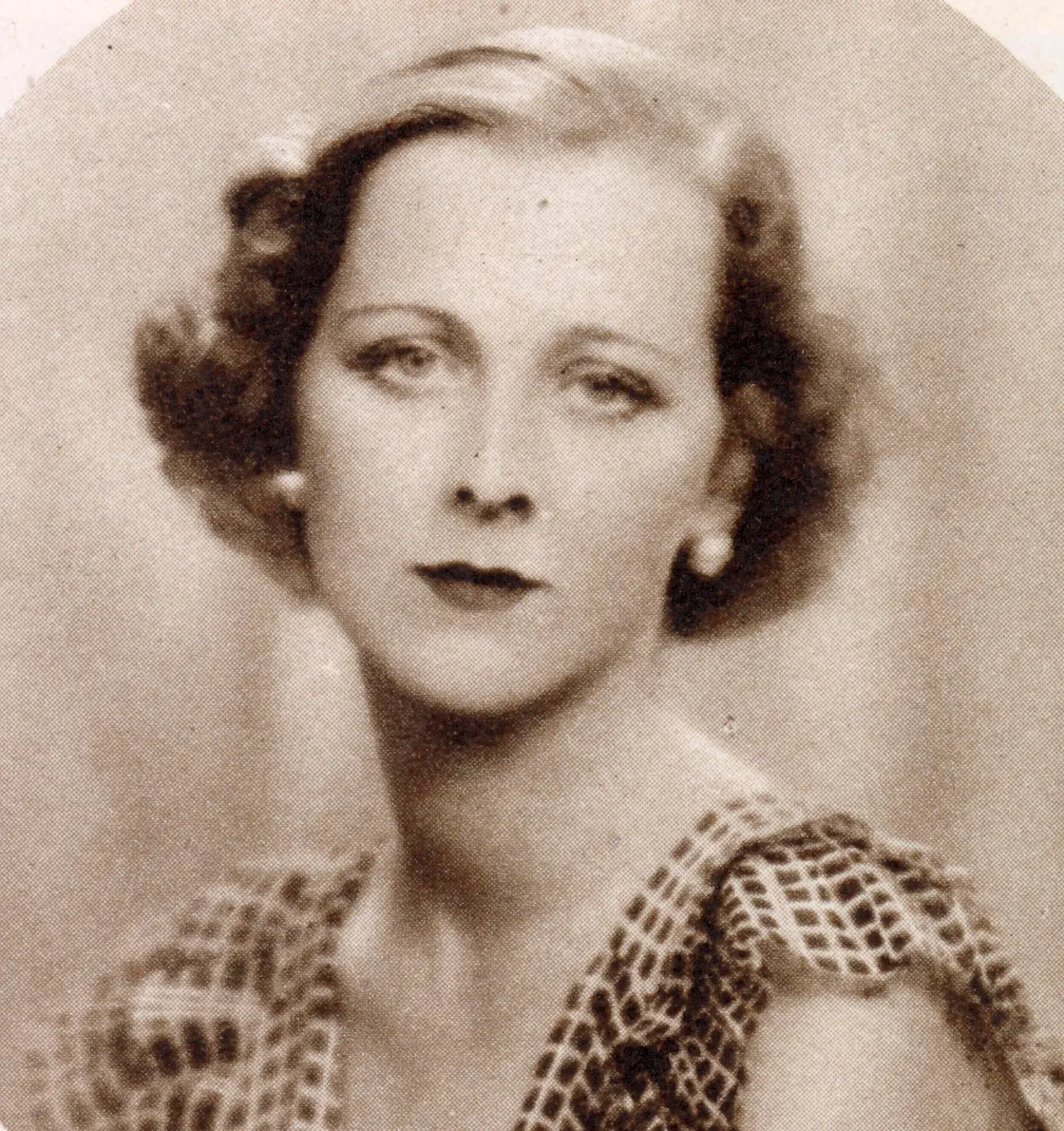
Margaret Monck in 1934.
Finger on the button
In 1932 Monck married John Monck Goldman, a film-maker, and her social circle grew to include musicians, film-makers, political activists and photographers.
These contacts inspired Monck to develop her interest in photography further.
How did Monck take her photos?
Monck bought a new “miniature camera”: a Leica. The camera was hand-held, and took rolls of film. She used a long-focus lens which could be used from further away, and also gave a greater sense of atmosphere. Her set up was relatively easy to use and fairly discrete – ideal for street photography.
By 1934 Monck was taking daily trips to the East End to photograph.
Monck on a mission
Monck took her candid photographs for personal rather than professional reasons.
The care she had for the people she photographed is clear to see. Her concerns about society were similar to many of those recording life in the 1930s East End, including her friend Edith Tudor-Hart.
Talking about the impacts of the terrible economic slump of the 1930s, known as the Great Depression, Monck said “it was all pervasive and it affected everybody… it gave you a horrid feeling... a feeling that things were breaking down”.
Her images don’t focus on poverty. But she still hoped they’d help. Monck later said that “one always hopes that showing what is actually there will have an effect”.
Monck stopped taking photographs regularly around the beginning of the Second World War in 1939, when she started a family and began running a farm.









